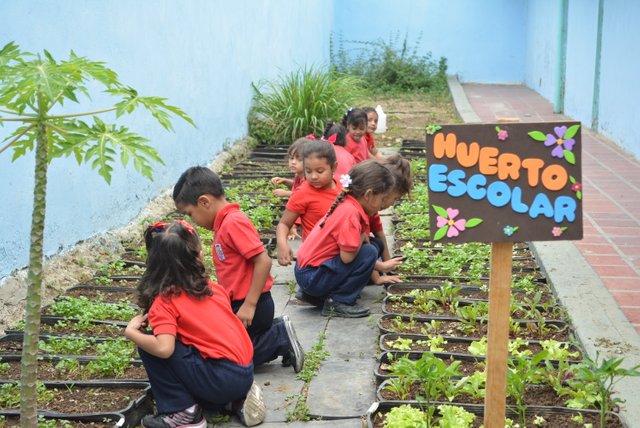Environmental education and children.
Preschoolers are just beginning to become familiar with the surrounding world: with the laws of nature, animals and plants. And a lot of work in environmental education. It is important for everyone: design a place in the inner courtyard, organize a living room and carry out systematic work to familiarize children with the world around them.

Source
The environmental problems are the general problems of the world population. The thinning of the ozone layer, global climate change, the depletion of natural soils, natural resources, the reduction of drinking water and the rapid growth of the planet's population, accompanied by an increase in production capacity, are often occur: these are problems that affect all countries Together, create an environment in continuous deterioration of the person. The variety of diseases is the result of the lack of an adequate interaction between man and nature.
The formation of the principles of ecological culture is the formation of a consciously correct relationship directly with nature in all its diversity, with the people who protect and create it, and also with people who create material or spiritual values on the basis of of its own nature. wealth. It is also an attitude towards yourself, as part of nature, an understanding of the value of life and health and your dependence on the state of the environment. This awareness of their abilities interacts creatively with nature.
The main objective is the education from the first years of life of a creative personality, human, socially active, able to understand and love the world that surrounds them, nature and treats them with care. To achieve this goal, we solve the following tasks:

Source
- Develop cognitive interest in the natural world.
- Direct the active activity of the preschool child to the conscious conservation of nature.
- Education of ecological conscience, moral attitude towards the world.
- To form the ecological knowledge, culture and attitude of children towards nature.
Nowadays, thanks to television, computers and books, children learn more about various objects and phenomena of nature, they have different questions about the world around them. Therefore, we try to build classes in such a way that, on the one hand, they answer the questions of interest to the children and satisfy their curiosity. And, on the other hand, to guarantee that they acquire the necessary knowledge. And the main objective of the lesson is not the transfer of knowledge from the teacher to the child, but the participation of the children in systematic and creative activities.
Excursions
Great importance is given in environmental development to excursions. Children really like excursions to the aquarium, where they can see many unusual inhabitants of the aquatic world.

Source
In excursions we present to children the diversity of the organic world, we observe the objects and phenomena of nature in different seasons. Children learn to navigate the terrain, to become familiar with the characteristics of the city and the region. We pay special attention to the organization of children's activities during the complex excursion: we teach the children to think that they are going to visit the natural inhabitants, to their big house, and therefore, they must follow the commandments that are necessary for the guests of the nature
Ecological tales.
The interest of children in the ecological tale is determined, first of all, by the novelty of the plot, the presence of unusual characters, their actions, and also by the final result.

Source
Experiments and experiments.
Children show great interest in research, so much attention in our work is devoted to experiments.

Source
Didactical games
In the knowledge of nature, a special place is occupied by didactic games.

Source
The didactic games teach children to apply existing knowledge in new conditions, activate a variety of mental processes, promote education of the ability to play together. The games allow the children to operate with the objects of nature themselves, comparing them, marking changes in the individual external characteristics.
It is recommended to create in the institution an ecological environment to increase the effectiveness of environmental work with children. The elements of the environment should contribute to:

Source
- Cognitive development of the child;
- Ecological and aesthetic development;
- Formation of the moral qualities of the child;
- Training behavior that respects the environment.




Posted from my blog with SteemPress : http://guada1.vornix.blog/2018/09/08/environmental-education-and-children/
Hello! I find your post valuable for the wafrica community! Thanks for the great post! We encourage and support quality contents and projects from the West African region.
Do you have a suggestion, concern or want to appear as a guest author on WAfrica, join our discord server and discuss with a member of our curation team.
Don't forget to join us every Sunday by 20:30GMT for our Sunday WAFRO party on our discord channel. Thank you.
If you would like to support the educational community by delegating to @steemiteducation, please click on any of the following links. This will ensure that more teachers are supported on a daily basis.
100SP 200SP 300SP 400SP 500SP 750SP 1000SP 2000SP 3000SP 4000SP 5000SP 10,000SP 25,000SP